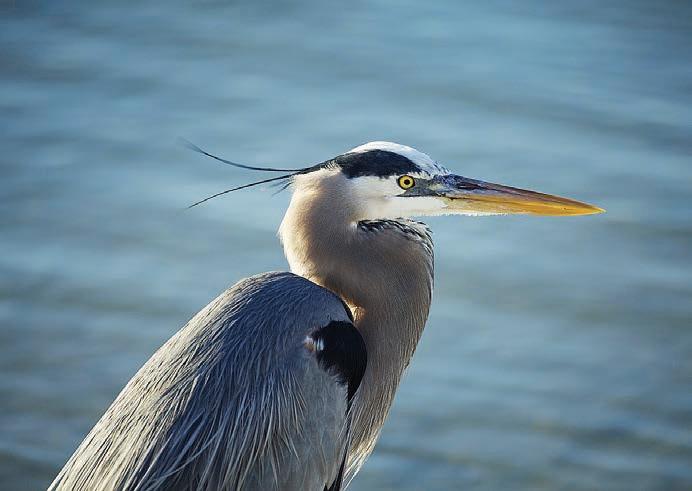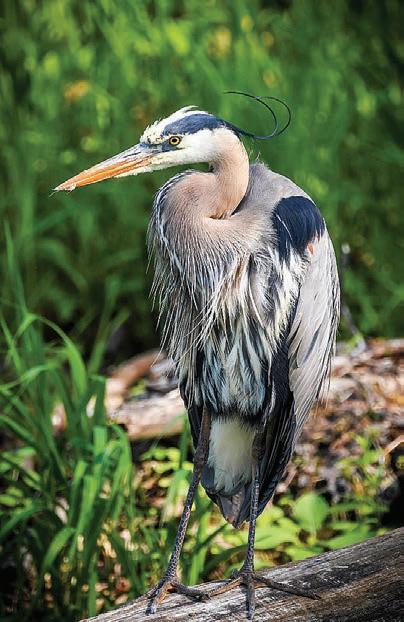
1 minute read
Critters + Crawlers
Great Blue Heron

by Abby Phinney, public relations specialist at The Lilly Center for Lakes & Streams photos courtesy of The Lilly Center for Lakes & Streams
This six-pound, hollow-boned bird can seem elusive, unless you live near a local wetland or pond. When you do see one, you will probably notice its silhouette first, complete with a narrow, graceful neck and long legs. It moves patiently, wading through shallow water or circling grassland with slow beats of its outstretched wings, waiting for the opportune moment to snag a fish or rodent.
A Wetland’s Patient Predator

Great blue herons are the bird giants of marshlands, second only to sandhill cranes. Their distinctive powder-blue feathers, black plumes and orange bill stand out among other wetland wildlife. They can grow as tall as four feet, with a wingspan that can extend to more than six feet. Herons prefer to feed on fish but will not turn down a meal of frog, salamander, or even small rodents or other birds.
When a pair of herons are ready to nest, the males do much of the work, gathering all nest-worthy sticks and presenting them to the female. She arranges them into a saucer-shaped, moss-lined home for a future clutch of two to six blue eggs. From the outside, these nests look like oversized sweet gum seed pods, perched 100 feet or higher off the ground. Heron colonies, also called “rookeries,” can have as many as 500 nests.
Although herons are neighborly while in the colony, they can be fierce outside of it. They prefer to stalk prey alone. If another heron (or curious human) infringes on their hunting territory, you will likely see a dramatic display of outstretched wings and a bill thrust skyward. Their whirring, creaking voice may warn you to watch from a respectful distance. Next time you are walking along a local lake or pond, or meandering down a trail through the woods, keep an eye out for the great blue heron!










